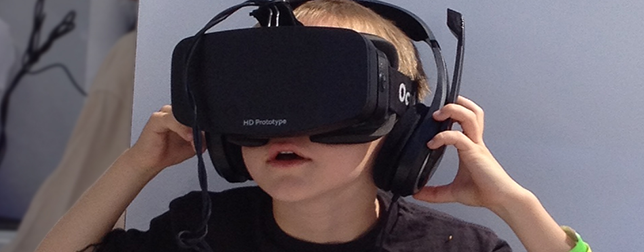If you are a parent then you know how difficult it is to get your kid through immunization. While it is frustrating for you, it is scary for your child as well. Children receiving vaccines are exposed to needles on numerous occasions throughout their childhood which leads to needle phobia. Needle phobia and needle anxiety may sometimes cause parents to delay scheduled visits with the doctor.
Read more Kessler Foundation and Virtualwear Team Up to Improve Recovery Outcomes in Stroke Patients
Chad Rudnick, M.D., an affiliate professor at Florida Atlantic University’s Charles E. Schmidt College of Medicine and founder of Boca VIPediatrics, decided to do something to make children overcome this fear. Dr. Rudnick got the idea for the study from an 8-year-old patient who came to his office with a virtual reality (VR) headset. The child placed the goggles on his head as Rudnick proceeded to give him an injection. Much to Rudnick’s delight, the child didn’t even flinch. Even his mother said, “Did this really happen?”
“That’s when the lightbulb went off in my head. It got me thinking whether this outcome was just a one-time incident or whether it would work again,” said Rudnick.
A previous study hypothesized that if a person is attending to another stimulus away from harmful stimulus, they will perceive that harmful stimulus as less severe, because humans have a limited capacity for attention.
So far, no studies have looked at the capacity of VR to distract kids during pediatric immunizations. So, Dr. Rudnick decided to put his theory to the test. He enrolled two pre-med students Emaan Sulaiman and Jillian Orden, in FAU’s Charles E. Schmidt College of Science as the co-authors of the study.
The team decided to test the feasibility, efficiency and usefulness of using VR headsets as a way to reduce fear and pain linked with immunizations in children. Their study focused on both anticipated and actual fear, as reported by the child and their caregiver.
Dr. Rudnick recruited participants aged 6-17 for his study. The researchers used a 3-D VR headset and a smartphone app that was incorporated into the headsets giving the kids the choice of a helicopter ride, roller coaster ride or a hot-air balloon ride. With the headset on children received a single injection from Dr. Rudnick which lasted about 30 seconds.
Read more Wearable Tech is Here to Stay with a Robust Presence in the Future Healthcare Industry
The children were required to complete a pre- and post-questionnaire assessing fear using the McMurty Children’s Fear Scale and the Wong-Baker pain scale. Parents or guardians were also required to complete a pre- and post-questionnaire evaluating their parental perception of fear and pain using the same scales.
Results showed that both anticipated and actual fear were decreased 94.1% among the children. At the same time, same number of children said that they would like to use virtual reality headsets again for their next immunization.
The study was published in the journal Pain Management, using this technique in a pediatric setting.













